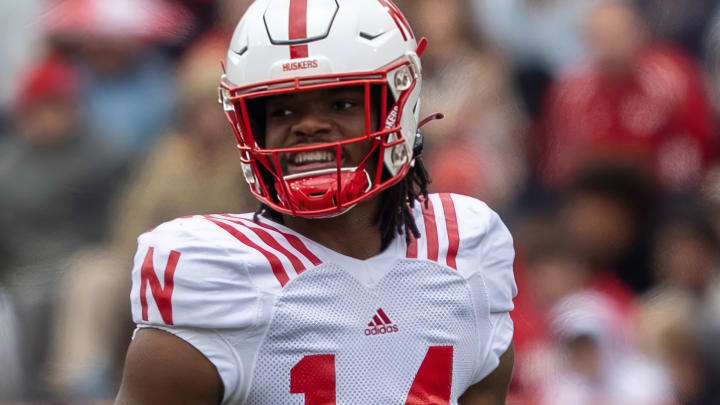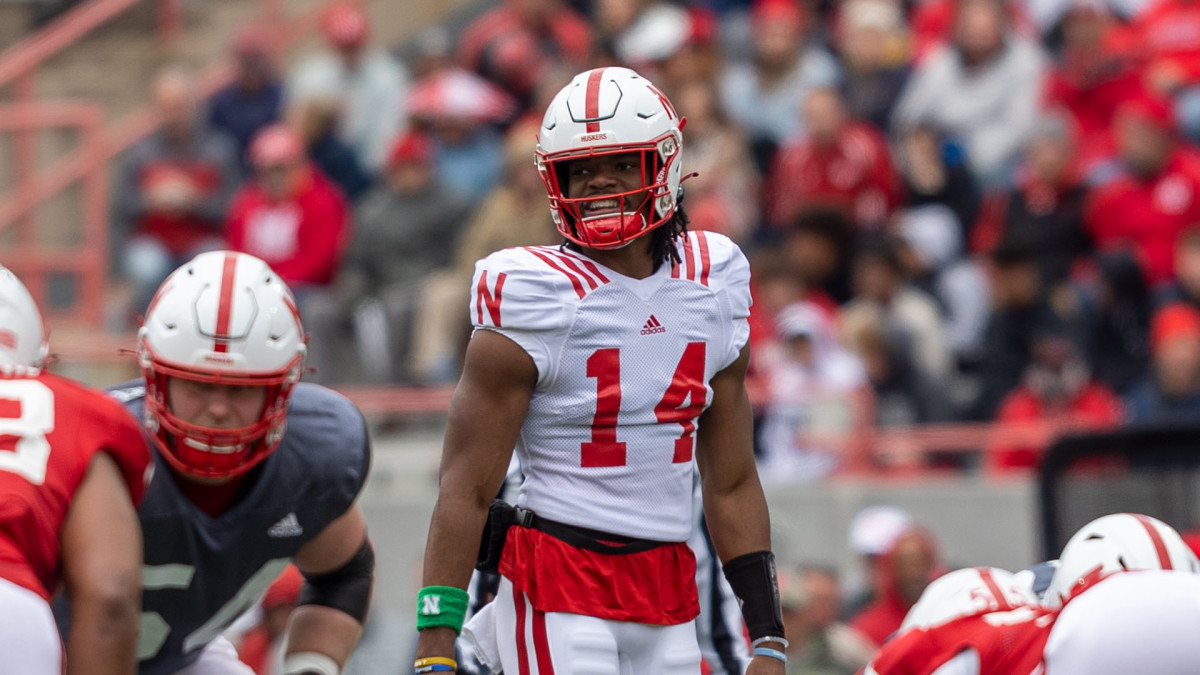Tad Stryker: The Run Comes First, at Least for Now


Coach Matt Rhule has left no doubt, from the day he was hired six months ago, that his offense at Nebraska will emphasize the running game, landing body blows early and often. With that in mind, it’s interesting to watch what’s happening at quarterback.
Based on the outcome of Nebraska football’s spring workouts, there’s evidence that Jeff Sims, the 6-foot-4, 220-pound dual-threat quarterback who showed signs he may be developing into an above-average passer, has what it takes to return the Big Red to the winning side of the ledger. Sims played in 24 games over three seasons for Georgia Tech, seeing the bulk of his action as a true freshman in the COVID-19-plagued 2020 season. He showed flashes, but could never lock down the starting job during his time at Tech.
Barring injury, Nebraska will start Sims this fall and, if all goes well, again in the 2024 season. He’s won the confidence of Rhule and offensive coordinator Marcus Satterfield.
Rhule has gone out of his way on several occasions to talk up the Cornhusker offensive line, which failed consistently over the past few seasons. I’ve got to think Rhule believes he can put together an o-line that does a reasonable job of run blocking this fall while avoiding drive-killing penalties. The best possible scenario for NU is to run consistently against teams that lack an elite defense, and attack with play-action passes as the situation presents itself. It’s a situation that begs for a breakout season from at least one of two promising but unproven tight ends — Thomas Fidone or Arik Gilbert.
It almost goes without saying that the offensive line will need to greatly improve over two seasons to approach the nine-win level by 2024, but certainly Rhule would have avoided any comments about “body blows” if he did not intend to spend serious time and effort addressing the o-line and developing all-conference-level running backs.
To reinforce the run-based offense, Rhule is leaving the door open for Logan Smothers and his option running ability to return from the transfer portal to provide a tested backup. That would be a big win for the Huskers.
I’m very comfortable with Nebraska pursuing a run-first offense, with a quarterback who’s effective at executing speed options and read options. At heart, I’m a “run-the-quarterback eight-to-10-times-a-game and kill ‘em with deep play action passes” man. I believe in a diversified run game with enough passing to keep defenses honest. Mike Riley showed us what a diversified passing game with a simplistic run game looks like. That’s another way to say “dink and dunk” — translation: “soft offense.”
You have to have an effective power run game to be taken seriously in the Big Ten. Run it 45 to 50 times a game, and throw 20 to 25 passes. Be able to pound it six or seven times in a row in the fourth quarter to kill the clock and preserve a narrow lead. Sure, if all goes well, eventually you may have to throw 35 passes to win a championship game, but let’s walk first, then run, before we worry about flying.
Having said all that, Rhule is recruiting pro-style quarterbacks. Dylan Raiola is a pro-style quarterback, for example. Daniel Kaelin, the Bellevue West all-stater who just verbally committed to Nebraska, is considered a pro-style quarterback, generally recognized as the most polished high school passer the Huskers have recruited in decades. Is Rhule sending mixed messages to Husker Nation?
After all the fuss dies down regarding Raiola’s commitment to Georgia, and Kaelin flipping from Missouri to Nebraska, we’re left with this question: What direction does the Husker offense go from here, especially if the running game — maybe even the option running game — has built momentum by the end of 2024? Keep in mind that Kaelin says Satterfield told him Nebraska will run a “balanced” offense.
It’s a win for Rhule that he and his staff were able to flip Kaelin, Both coach and athlete handled the situation with integrity and goodwill. Both were in a tough spot throughout the late winter and spring. Certainly Rhule’s pursuit of Raiola, the nation’s top-ranked 2024 recruit, was worthwhile, but ultimately Kaelin could work out better for Nebraska, who may help Rhule lock down Omaha recruiting while delivering improved passing ability to the program. It was refreshing to see how quickly and decisively Kaelin acted to come to Lincoln when the opportunity presented itself, because he could easily have strung it out for a month or more, if he enjoyed the “courtship” process enough. So yeah, I like the relative lack of drama with Kaelin, as compared to Raiola.
The Huskers will be run-heavy in 2023 and likely in 2024, but after that, will they transition to incorporate more passing? If Kaelin is ready, they might. Kaelin will have the advantage of being developed from Day One by Rhule and his staff. I don’t consider either Heinrich Haarberg or Chubba Purdy a serious threat to ever win the starting job. If within that time, Rhule and offensive line coach Donovan Raiola have developed the o-line as much as good football programs normally do, they’ll have the flexibility to do it either way. But they’ll need at least one elite offensive tackle and three other solid ones to win big with a balanced attack.
Some will say, “You can win with any type of offense, as long as you execute it well.” That’s true, but it assumes you have the personnel on hand, and enough depth of personnel, to run any kind of offense. I’m not saying it can’t be done. I’m saying pro-style quarterbacks don’t have a history of winning championships at Nebraska. I’m saying that coach Raiola will have to accomplish about three times as much in the next two years as Mike Cavanaugh and Greg Austin did in the seven-year span from 2015 to 2021 to put the Huskers in a position where they can effectively run a balanced run-pass attack.
Nebraska enjoyed consistency as long as it was able to pummel most opponents physically, which it was almost every year for four decades under the leadership of Bob Devaney, Tom Osborne and Frank Solich. Interestingly, those three coaches used a variety of quarterbacks, ranging from pro-stylers Dave Humm and Vince Ferragamo, who were probably the worst running threats of the Devaney-Osborne years; to Jerry Tagge, Turner Gill, Steve Taylor, Brook Berringer and Joe Ganz, who were dual-threat types; to Tommie Frazier, Scott Frost, Eric Crouch and Jammal Lord, all great runners who occasionally threw the ball well enough to keep defenses honest. Some may call Tagge a pro-style quarterback who won championships. I’d counter that Tagge ran the football 17 times in the 1971 Game of the Century against Oklahoma, and threw fewer than 20 passes per game his senior year. Tagge was successful because Nebraska could land body blows with its running game.
A physical, run-heavy, hard-hitting offense can be successful with various kinds of quarterback, although the pro-style quarterback must be athletic enough to be a running threat, at bare minimum, to the degree that Aaron Rodgers was a running threat for the Green Bay Packers during the first half of his career. Having Russell Wilson-style running ability would be better. From the high school tape I’ve seen, plus a dash of added optimism, my hope is Kaelin’s running ability could eventually fit in somewhere between Rodgers and Wilson.
Without doubt, I’m indulging in rose-colored anticipation, something Husker fans used to do every year about this time. If Rhule and coach Raiola can rebuild the foundation with a respectable running attack, that type of frivolity will start to make more sense in coming years.
